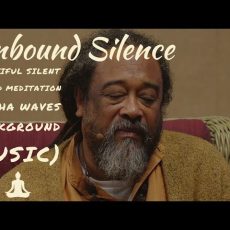The meaning of the word ‘Vipassana’ is insight – to perceive things as they really are, without a veil, without any facade, in their absolute true nature. Practicing Vipassana involves a practical and scientific examination and observation of the self that results in complete purification of the mind and achievement of the highest possible happiness.
Vipassana meditation, as a practice, is all about following the principles of Dhamma/ Dharma, the universal law of nature as proposed by Gautama Buddha, the man who revived Vipassana in India to relieve thousands from suffering. The practice comprises of walking on the noble eightfold path, which is broadly categorised into Sila (Morality), Samadhi (concentration) and Pañña (wisdom, insight).
To learn Vipassana, it is a must to take a ten-day residential course under the guidance of a qualified Vipassana teacher. The courses are conducted at established Vipassana Centers and other non-center locations across India (Delhi, Dharamshala, Hyderabad are a few places where you can find them). During the entire duration of the retreat, students remain within the course site and have absolutely no contact with the outer world. They refrain from reading and writing, and suspend all religious practices or other disciplines. During the course, participants follow a well designed Code of Discipline. They also observe noble silence by not communicating with fellow students; however, they are free to discuss meditation questions with the teacher and material problems with the management.
There are three steps to the training (as outlined on https://www.vridhamma.org/), in addition to a few more details about the programme:
“First, students practice sila (Morality) – abstaining from actions which cause harm. They undertake five moral precepts, practising abstention from killing, stealing, sexual misconduct, lying and the use of intoxicants. The observation of these precepts allows the mind to calm down sufficiently to proceed further with the task at hand.
Second, for the first three and a half days, students practise Anapana meditation, focusing attention on the breath. This practice helps to develop samadhi (concentration) and gain control over the unruly mind. These first two steps of living a wholesome life and developing control of the mind are necessary and very beneficial, but they are incomplete unless the third step is taken: purifying the mind of underlying mental impurities.
The third step undertaken for the last six and a half days, is the practice of Vipassana: one penetrates one’s entire physical and mental structure with the clarity of panna (wisdom, insight).
Students receive systematic meditation instructions several times a day, and each day’s progress is explained during a taped evening discourse by Mr. S. N. Goenka. Complete silence is observed for the first nine days. On the tenth day, students resume speaking, making the transition back to a more extroverted way of life. The course concludes on the morning of the eleventh day. The retreat closes with the practice of metta-bhavana (loving-kindness or good will towards all), a meditation technique in which the purity developed during the course is shared with all beings.”





